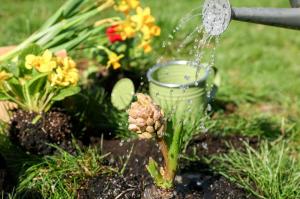How to Save a Dying Rubber Tree Plant
A rubber tree plant is a common indoor plant, known for its lush foliage and unique appearance. However, like all plants, it can sometimes face health issues that can cause it to wilt and die. If you notice your rubber tree plant is struggling, there are a few things you can do to save it and bring it back to health.
Identify the Problem
The first step in saving a dying rubber tree plant is to identify the problem. There are several common issues that can cause a rubber tree plant to decline, including:
Overwatering or Underwatering
Too Much or Too Little Sunlight
Low Humidity
Pests or Disease
Take a close look at your plant and try to identify what the problem might be. This will help you determine the best course of action.
Adjust Watering and Lighting
The most common issues that cause a rubber tree plant to wilt are over or underwatering and too much or too little sunlight. If your plant is suffering from either of these issues, make adjustments accordingly.
Water your rubber tree plant only when the top inch of soil feels dry to the touch. Be sure to drain excess water from the pot to prevent the plant roots from sitting in standing water, which can cause root rot.
Place your rubber tree plant in bright, indirect sunlight. If it is getting too much direct sun, move it to a spot that is more shaded. If it is not getting enough light, move it closer to a window or consider using a grow light to supplement natural light.
Increase Humidity
Rubber tree plants require a higher level of humidity than many indoor environments provide. If your plant is suffering from dry air, it can cause the leaves to brown, curl, and fall off.
To increase the humidity around your rubber tree plant, consider using a humidifier, placing pebble trays filled with water near the plant, or misting the leaves with water once or twice a day.
Treat Pests and Disease
If your rubber tree plant is suffering from pests or disease, it is important to treat it as soon as possible to prevent further damage.
Common pests that affect rubber tree plants include spider mites and mealybugs. Use an insecticide specifically formulated for these pests and follow the instructions carefully.
If your plant is suffering from disease, such as root rot or leaf spot, consider consulting a plant expert or your local garden center for advice on the best treatment options.
Potting and Fertilization
The final step in saving a rubber tree plant is to ensure it has the right pot and fertilizer.
Make sure your plant is in a pot with good drainage and the right size for its root system. If the pot is too small, it can stunt the plant's growth and cause it to decline.
Use a balanced fertilizer formulated for houseplants to give your rubber tree the nutrients it needs to thrive. Follow the instructions on the label carefully and avoid over-fertilizing, which can burn the plant's roots and cause damage.
With the right care and attention, a dying rubber tree plant can be saved and brought back to good health. Remember to identify the problem, adjust watering and lighting, increase humidity, treat pests and diseases, and ensure the plant is in the right pot with balanced fertilizer.

 how many times do yo...
how many times do yo... how many planted tre...
how many planted tre... how many pine trees ...
how many pine trees ... how many pecan trees...
how many pecan trees... how many plants comp...
how many plants comp... how many plants can ...
how many plants can ... how many plants and ...
how many plants and ... how many pepper plan...
how many pepper plan...





























